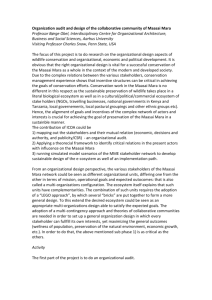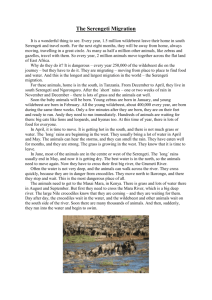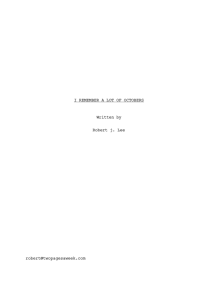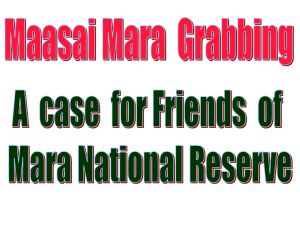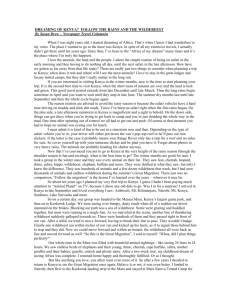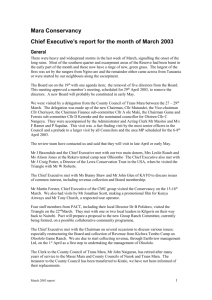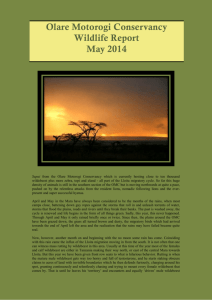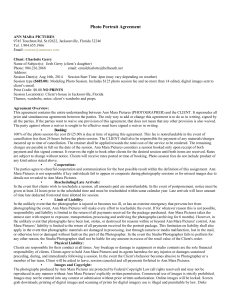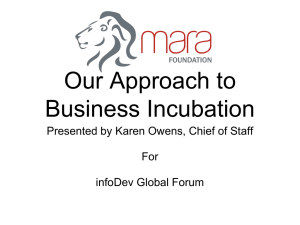The Maasai Mara National Reserve Kenya`s Jewel of
advertisement
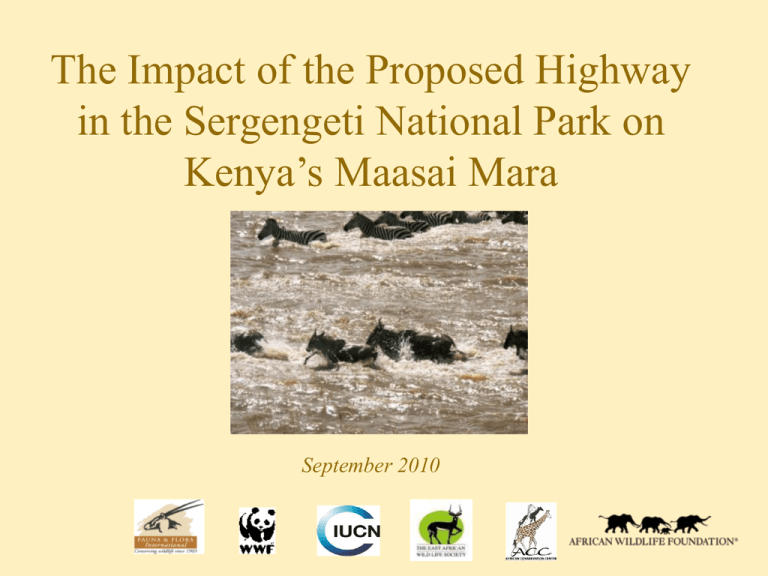
The Impact of the Proposed Highway in the Sergengeti National Park on Kenya’s Maasai Mara September 2010 Serengeti—Maasai Mara Eco-system 25,000 square kilometres (9,700 sq mi) The Maasai Mara National Reserve Kenya’s Jewel of Protected Areas • 1,510 square kilometres (583 sq mile) • The Big 5 • Unparaled landscape in Kenya • Major draw for visitors in Kenya The Mara: Kenya’s #1 Tourism Attraction The Maasai Mara Game Reserve is widely considered to be Africa’s greatest wildlife reserve. Each year the Mara plays host to the world’s greatest natural spectacle, the Great Wildebeest Migration from the Serengeti. 7th wonder of the world, 4th preferred tourist destination of the worldMaasai Mara National Reserve, Africa's greatest wildlife reserve, hosts the world’s greatest natural spectacle - the annual wildebeest migration also totted to be the world's greatest game show. The Mara: Economic Cornerstone of Tourism Majority of tourists include the Mara on Safari in Kenya and the migration is a major draw for visitors. If this was lost, tourism across all of Kenya would suffer. MMNR Narok Visitor Days/yr: 520,000 Mara Triangle Visitor Days/yr: 115,500 Total: 635,500 Visitor Days per year Assuming each visitor stays for average of 2.5 nights, estimate of total no of individual visitors to the MMNR annually: 254,200. Annual revenue MMNR Narok all sources: US$ 33,078,000 Annual revenue Mara Triangle all sources: US$ 10,157,000 Total estimated MMNR annual revenue: US$43m The Mara: A National Treasure At Risk • No adopted management plan • Outdated management infrastructure, equipment and systems • Steep declines in widlife numbers: 50% decline in lions over the last 15 years, 75% decline in wildebeest since 1970s, extinction of Roan Antelope and Greater Kudu. • Reduced water levels: Mara River • Deteriorating visitor experience because of overdevelopment and lack of planning and : 100 vehicles have been recorded around a single wildebeest crossing. Agricultural Encroachment on Protected Areas Mara Cropping % Serengeti Amboseli Red = 10-20% Tan = 40% Green = 60% Light blue = 80-100% Tarangire Source : Africover, FAO 2002 The Great Migration 1.4 Million Wildebeest, 500,000 zebra The Serengeti Highway Proposal 71 km: Ecological bottleneck of the Park The Serengeti Highway Proposal Sever the wildebeest migration Create a physical barrier for wildlife movement Destroy the wilderness characteristics Result in human death because of road accidents Photo: Frankfurt Zoological Society Sound Alternatives Phase I: 425 km, 365 Km of paving. Phase IIa: 555 km Phase IIb: 677Km long requires 301km of paving. Government’s Road Proposal requires 500 km of paving. Alternative Road = More Beneficiaries Source: Frankfurt Zoological Society Botswana lost its wildebeest and zebra migration with fences. Banff National Park in Canada lost its elk migration because of a dissecting road. Kenya and Tanzania host one of the last great migrations in the world, lets not make the same mistake. Conclusion The development of the proposed Serengeti Highway as currently planned would have a severe impact on the Maasai Mara’s wildlife, tourism, and national economy. There are sound alternatives to the proposed Highway. The Serengeti National Park is a World Heritage Site. The proposed highway puts this status at risk and eliminates any opportunity for Kenya’s Maasai Mara to achieve WHS designation. In addition to addressing this severe threat to the Mara, we encourage the Government of Kenya to address the other internal threats facing the Mara. Thank You
